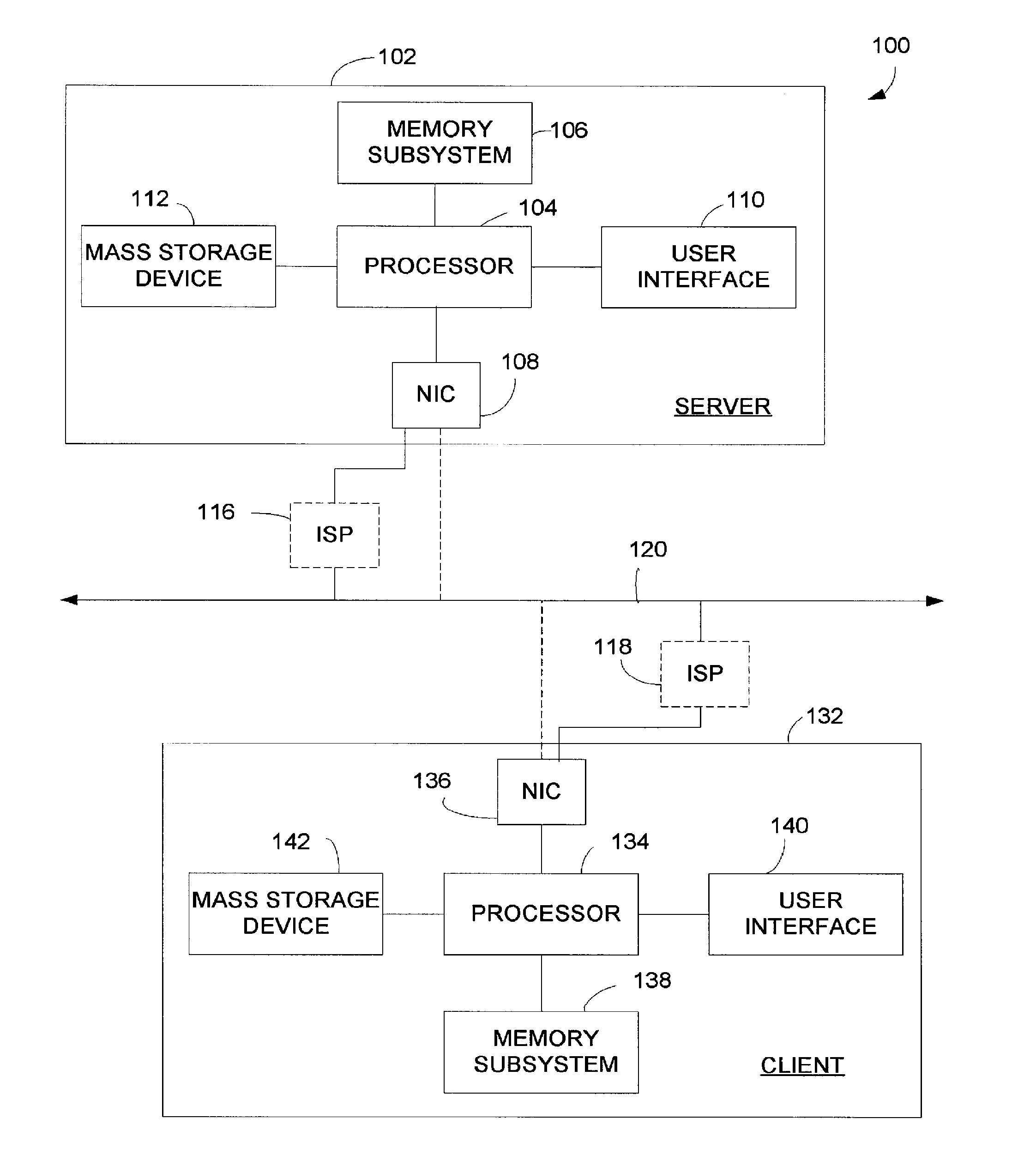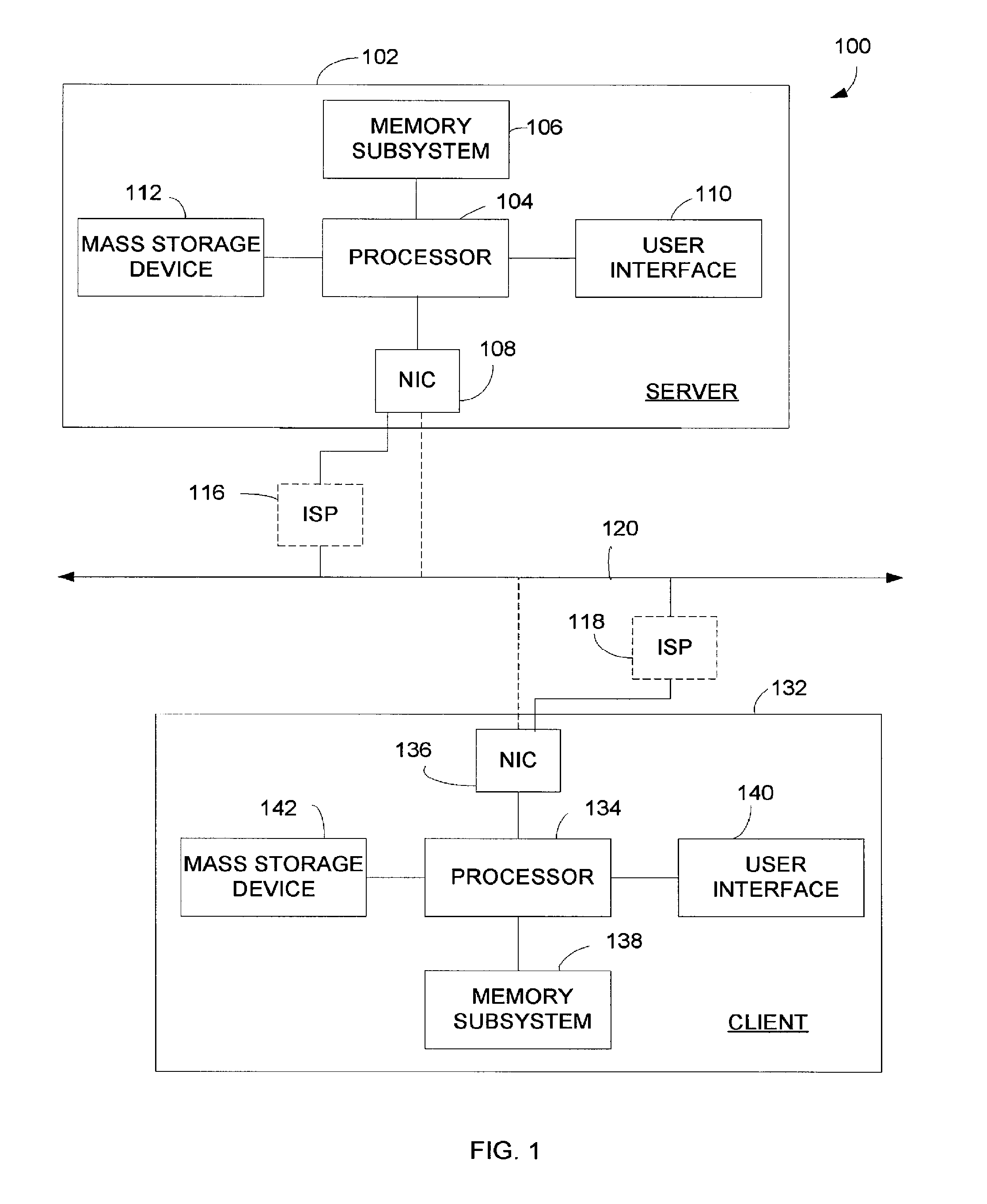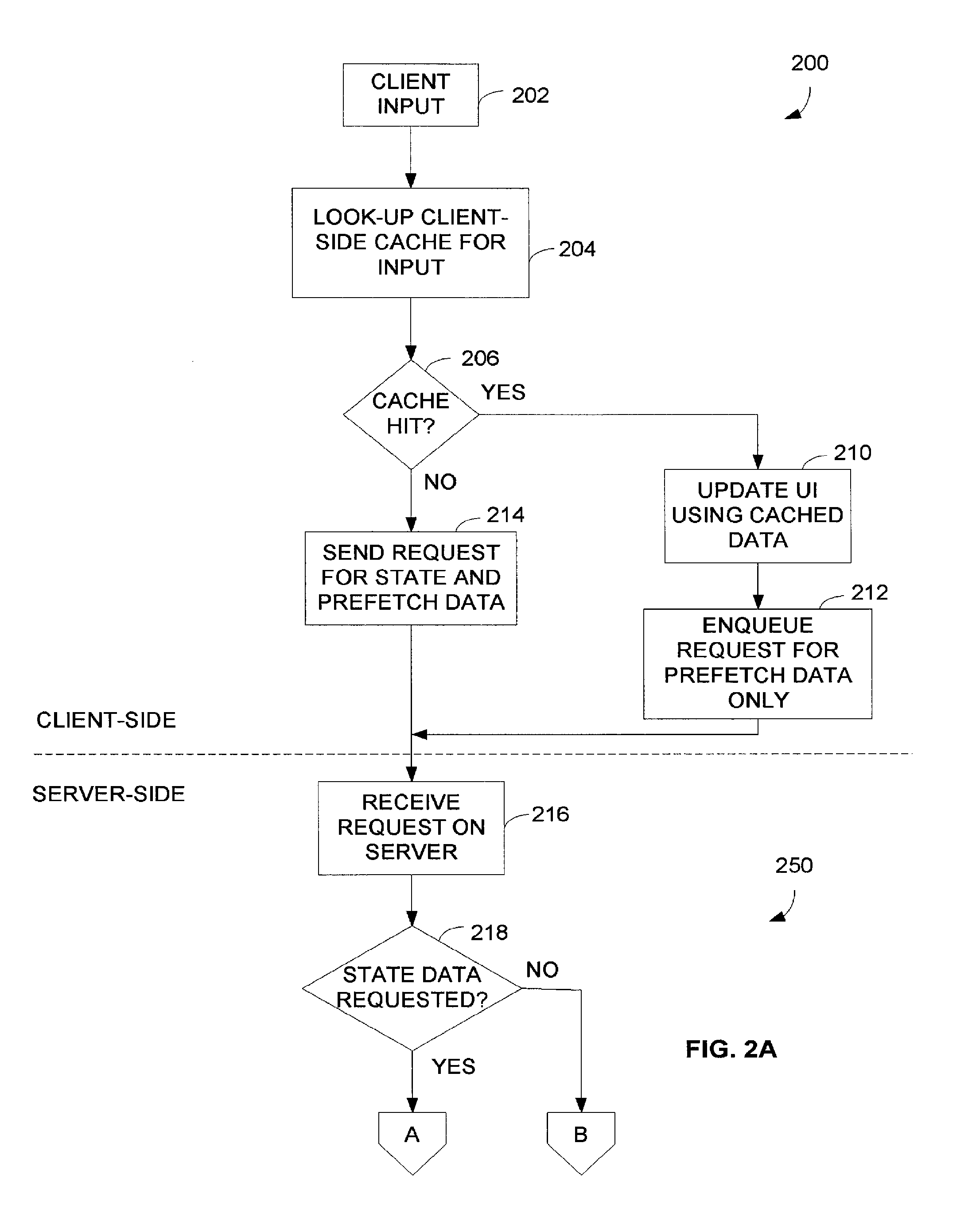Predictive prefetching of data from remote client-state cache from server to update local client-state cache
a client-state cache and data technology, applied in the field of client-server system, can solve the problems of affecting the response time of the user interface, the approach cannot handle a complex interdependent sequence of user operations, and the user may experience a significant delay between the manipulation of the ui and the update of the ui, so as to reduce the delay in response and avoid the effect of delay introduced
- Summary
- Abstract
- Description
- Claims
- Application Information
AI Technical Summary
Benefits of technology
Problems solved by technology
Method used
Image
Examples
Embodiment Construction
)
[0027]Various embodiments are directed to a state-based client-server system having a client user interface (UI) with improved response time. As previously noted, when an application that is state-based moves through a sequence of states, operations performed at a current state cause a transition to a next state. Such applications may maintain multiple sessions, each with a current state. In this situation, a display of the UI displays a representation of the current state of the application, or a session in the application. Operations performed in a client are sent to a server as a request where the operations are processed causing the application or session to move into a new state. New state data representing the new state is sent to the client as a response. The client then uses the new state data to update its UI. It should be appreciated that the present invention may be exploited in a variety of applications and / or systems in which UI paths include at least some paths (or po...
PUM
 Login to View More
Login to View More Abstract
Description
Claims
Application Information
 Login to View More
Login to View More - R&D
- Intellectual Property
- Life Sciences
- Materials
- Tech Scout
- Unparalleled Data Quality
- Higher Quality Content
- 60% Fewer Hallucinations
Browse by: Latest US Patents, China's latest patents, Technical Efficacy Thesaurus, Application Domain, Technology Topic, Popular Technical Reports.
© 2025 PatSnap. All rights reserved.Legal|Privacy policy|Modern Slavery Act Transparency Statement|Sitemap|About US| Contact US: help@patsnap.com



